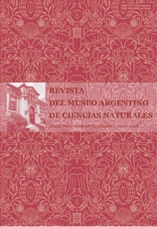Composición y estructura de anfibios anuros en un transecto altitudinal de los Andes Centrales de Colombia
Resumen
Composition and structure of Anura (Amphibia) in an altitudinal transect from the Central
Andes of Colombia. Results of diversity and microhabitat preference of anura in six Andean forest patches
located in the wester flank of the Central Cordillera of Colombia are presented. Samplings were made between
December/2003 July/2004 in the main sites. The effort of capture was standardized in four days of sampling
between 06:00-09:00 hrs and 19:00-24:00 hrs with an effort of capture of 64 hours/man. 322 individuals of 16
species distributed in four families were captured: 12 Leptodactylidae, one Hylidae, two Centrolenidae and a
Bufonidae. The most abundant species were Eleutherodactylus uranobates (25.46%) and E. permixtus (18.32%).
The diversity among sites was analyzed using a t-student that showed significant differences (t= 128.4774; p=
0.000), the sites with greater diversity were located between 1600 and 2500 m. The different indicators of
diversity obtained in the curve of species accumulation were useful by extrapolation. The occurrence of species
in three variables was analyzed: horizontal position with respect to bodies of water, vertical position with respect
to the ground and type of substrate with a chi-square for five species, of which none were distributed independently.
A contradiction was found in the ecological data collected for E. permixtus when compared with data reported in
the relevant literature. In addition, three alternative sites were taken into account to extend the listing of
species record, and Hyla larinopygion and Centrolene prosoblepon were added. The rank of distribution of
Eleutherodactylus achatinus, Cochranella griffithsi, Centrolene prosoblepon and Leptodactylus colombiensis is
extended.
Andes of Colombia. Results of diversity and microhabitat preference of anura in six Andean forest patches
located in the wester flank of the Central Cordillera of Colombia are presented. Samplings were made between
December/2003 July/2004 in the main sites. The effort of capture was standardized in four days of sampling
between 06:00-09:00 hrs and 19:00-24:00 hrs with an effort of capture of 64 hours/man. 322 individuals of 16
species distributed in four families were captured: 12 Leptodactylidae, one Hylidae, two Centrolenidae and a
Bufonidae. The most abundant species were Eleutherodactylus uranobates (25.46%) and E. permixtus (18.32%).
The diversity among sites was analyzed using a t-student that showed significant differences (t= 128.4774; p=
0.000), the sites with greater diversity were located between 1600 and 2500 m. The different indicators of
diversity obtained in the curve of species accumulation were useful by extrapolation. The occurrence of species
in three variables was analyzed: horizontal position with respect to bodies of water, vertical position with respect
to the ground and type of substrate with a chi-square for five species, of which none were distributed independently.
A contradiction was found in the ecological data collected for E. permixtus when compared with data reported in
the relevant literature. In addition, three alternative sites were taken into account to extend the listing of
species record, and Hyla larinopygion and Centrolene prosoblepon were added. The rank of distribution of
Eleutherodactylus achatinus, Cochranella griffithsi, Centrolene prosoblepon and Leptodactylus colombiensis is
extended.
Texto completo:
PDFEnlaces refback
- No hay ningún enlace refback.

This work is licensed under a Creative Commons Attribution 3.0 License.

